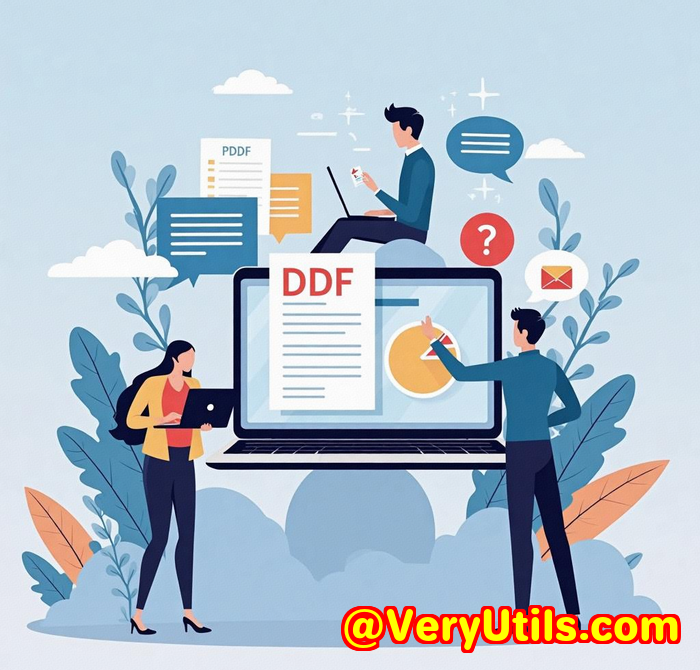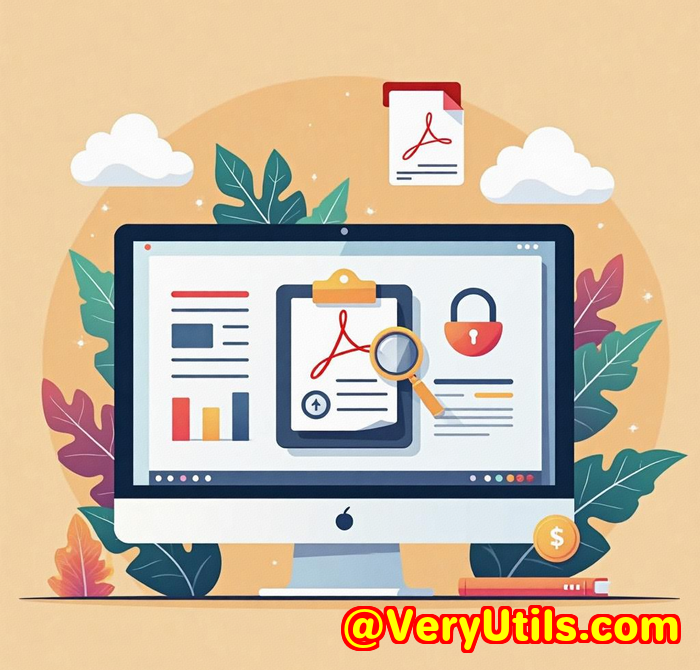How to Leverage VeryPDF JavaScript PDF Annotator to Add Layered Comments and Markups in PDFs
How to Leverage VeryPDF JavaScript PDF Annotator to Add Layered Comments and Markups in PDFs
Every time I had to review multiple drafts of a contract or collaborate on project documents, juggling comments and markups across different versions was a nightmare. Ever been stuck in a loop of emailing PDFs back and forth just to get a few notes added? If you work with PDFs regularly, especially in teams, you know how messy that can get.

That's exactly why I was excited when I found the VeryPDF JavaScript PDF Annotator Source Code License. It's a slick tool that lets you add, manage, and layer comments and markups on PDFsand plenty of other file typesright inside any web browser. No plugins, no fuss. Whether you're on Windows, Mac, Linux, iOS, or Android, it just works smoothly.
Why I Chose VeryPDF JavaScript PDF Annotator
I stumbled on this tool while hunting for a way to simplify PDF collaboration in our web app. It's an HTML5-based annotator that supports over 50 file formats, including PDFs, Office docs, CAD files, and images. That means whether you're reviewing a detailed CAD drawing or a Word contract, you can add comments, highlights, freehand notes, and moreall layered on top of your original file without messing it up.
The source code license means I could integrate it directly into our platform, giving users a seamless experience. Unlike other solutions that rely on Java plugins or separate apps, this one runs entirely in-browser, making it lightning-fast and easy to deploy.
Key Features That Made a Difference
Here's what stood out and how I've used it day to day:
-
Layered Annotations and Collaboration: Multiple users can mark up the same document simultaneously, each layer visible and editable independently. For example, during a contract review, legal, finance, and management teams can add their comments separately but still see the full picture. It cuts down confusion and endless email chains.
-
Rich Annotation Tools: From text and highlights to freehand drawings and strikethroughs, you get all the essentials plus specialized comments like point, area, and text comments. I used the highlight and area comments feature to flag key contract clauses and leave detailed notes without altering the document itself.
-
Cross-Platform Compatibility: Whether I'm on a desktop or tablet, Windows or iOS, the annotator behaves the same. This consistency means team members can work from anywhere without tech headaches.
-
Export and Share with Annotations: After adding all the markups, I can export the PDF with the annotations embedded or share it via email directly from the tool. This feature saves time compared to exporting and attaching files manually.
-
Customisable and Integratable: The REST API allowed me to hook the annotator up with our backend effortlessly, syncing annotation data with user accounts and workflow status.
Compared to other PDF annotation tools I've tried, VeryPDF's offering felt less clunky and far more flexible. Many alternatives are either too limited in file formats or force users to install plugins, which kills adoption.
Who Should Use This?
-
Legal teams handling contracts and revisions, needing layered comments from multiple reviewers.
-
Project managers and engineers working on complex CAD or Visio diagrams that require detailed markups.
-
Educators and trainers annotating lecture notes or assignments in various formats.
-
Business teams collaborating on proposals, reports, and presentations across platforms.
-
Developers who want to embed robust document annotation features in their apps without reinventing the wheel.
Real-World Use Cases
-
A law firm I worked with embedded the annotator in their client portal, letting clients review and comment on legal drafts without printing or emailing PDFs.
-
An engineering company uses it to annotate CAD drawings with notes and revision history across departments.
-
Marketing teams review and revise multi-format campaign materials faster by centralising feedback on one platform.
Why It's Worth Your Time
If you deal with layered comments in PDFs or need a smooth way to annotate documents collaboratively, this tool can seriously streamline your workflow. It saved me hours weekly just by cutting down back-and-forth emails and confusing feedback loops. Plus, it's rock solid across browsers and devices.
I'd highly recommend the VeryPDF JavaScript PDF Annotator to anyone who needs a powerful, flexible, and easy-to-use PDF markup solution embedded right in their apps or workflows.
Start your free trial now and boost your productivity: https://veryutils.com/html5-pdf-annotation-source-code-license
Custom Development Services by VeryPDF
VeryPDF offers tailored development services to fit your exact technical needs. Whether you're running Linux, macOS, Windows, or server environments, they have expertise in creating custom PDF processing tools using Python, PHP, C/C++, Windows API, and more.
They also build Windows Virtual Printer Drivers that can convert print jobs into PDFs, images, and other formats, plus solutions for capturing and monitoring printer jobs. VeryPDF specialises in document analysis, OCR, barcode recognition, and form generation technologies.
If your project requires specific PDF manipulation, annotation, security, or digital signature features, you can count on VeryPDF's developers to build the right solution.
For custom inquiries, visit http://support.verypdf.com/ and discuss your project needs.
FAQs
Q: What file formats does the VeryPDF JavaScript PDF Annotator support?
A: It supports over 50 formats including PDF, Microsoft Office files, CAD, Visio diagrams, and various image types like JPG, PNG, TIFF, and more.
Q: Can multiple users annotate the same PDF simultaneously?
A: Yes, the tool supports layered annotations allowing collaborative marking and commenting in real time.
Q: Do I need to install any plugins to use this annotator?
A: No, it's built entirely on HTML5 and JavaScript, working directly in any modern browser without plugins.
Q: Can annotations be exported or shared?
A: Absolutely. You can export PDFs with embedded annotations or share them directly via email from the annotator interface.
Q: Is the annotator compatible with mobile devices?
A: Yes, it's fully cross-platform and works on Windows, Mac, Linux, iOS, and Android devices seamlessly.
Tags / Keywords
-
VeryPDF JavaScript PDF Annotator
-
Layered PDF comments
-
PDF markup collaboration tool
-
Cross-platform PDF annotation
-
HTML5 PDF annotation source code license



